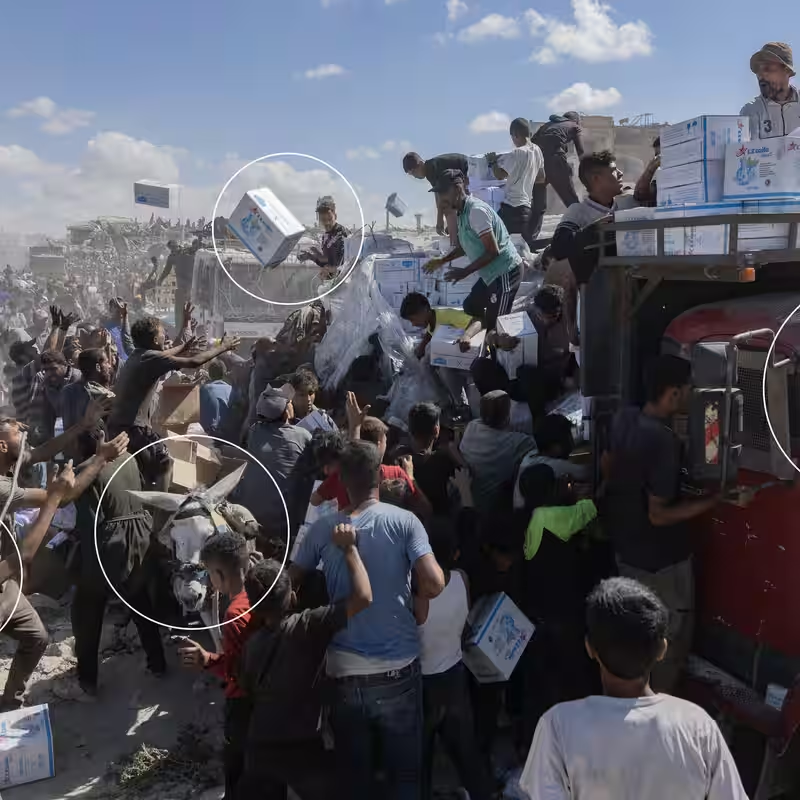Table of Contents
- The Cease-Fire That Didn’t Stop Hunger
- Why Aid Deliveries Are Failing
- A Single Photo Tells the Whole Story
- The Logistical Nightmare Inside Gaza
- What the World Is (Not) Doing
- Sources
The Cease-Fire That Didn’t Stop Hunger
The guns may have fallen silent in Gaza—but the hunger hasn’t. Despite a new cease-fire taking hold across the enclave, aid deliveries to Gaza remain critically insufficient, leaving millions of civilians in a state of desperation.
Humanitarian organizations warn that while the truce offers a rare window for relief, the scale of need far outpaces the trickle of food, medicine, and fuel getting through. In some areas, aid convoys are met not with gratitude—but with chaos, as starving families swarm trucks in a bid to survive.
Why Aid Deliveries Are Failing
Even with hostilities paused, the aid deliveries to Gaza face a web of obstacles:
- Destroyed infrastructure: Roads, bridges, and distribution hubs have been obliterated after months of bombardment.
- Security concerns: Aid workers report uncertainty about safe corridors, with sporadic checkpoints and unexploded ordnance.
- Bureaucratic delays: Inspections at border crossings remain slow, and coordination between Israeli, Palestinian, and international agencies is fragmented.
- Overwhelmed logistics: The few functioning warehouses are unable to handle the volume needed for 2.3 million people.
“The cease-fire is necessary—but not sufficient,” said a senior UN relief official who asked not to be named. “Without a massive, coordinated surge in aid deliveries to Gaza, this pause could become a prelude to famine.”
A Single Photo Tells the Whole Story
A now-viral photograph from October 16, 2025, captures the raw urgency of the crisis. In it, dozens of emaciated men and women scramble over a World Food Programme truck near Khan Younis, tearing open sacks of flour as armed escorts stand helplessly by.
The image—haunting and humbling—has become emblematic of a deeper truth: peace on paper doesn’t feed children. “They’re not rioting,” said one local journalist. “They’re just trying not to die.”
The Logistical Nightmare Inside Gaza
According to the International Committee of the Red Cross, fewer than 100 aid trucks entered Gaza on the first full day of the cease-fire—far below the 500-truck daily minimum recommended by the UN before the war even began.
Compounding the issue is the near-total collapse of Gaza’s internal transport network. Fuel shortages mean even if aid arrives at the border, there are few working trucks to distribute it. Many drivers have been killed or displaced.
“We have food at the crossing,” said a logistics coordinator with a major NGO. “But we can’t move it. The roads are rubble. The people are skeletal. And every hour counts.”
What the World Is (Not) Doing
While Western leaders have hailed the cease-fire as a diplomatic breakthrough, humanitarian groups are sounding the alarm over the lack of follow-through.
The U.S. and EU have pledged additional aid, but much of it remains in planning stages. Meanwhile, regional actors like Egypt and Qatar are straining to fill the gap, operating makeshift distribution centers with limited capacity.
Experts stress that without immediate, large-scale aid deliveries to Gaza, the truce could unravel—not from renewed fighting, but from societal collapse.




